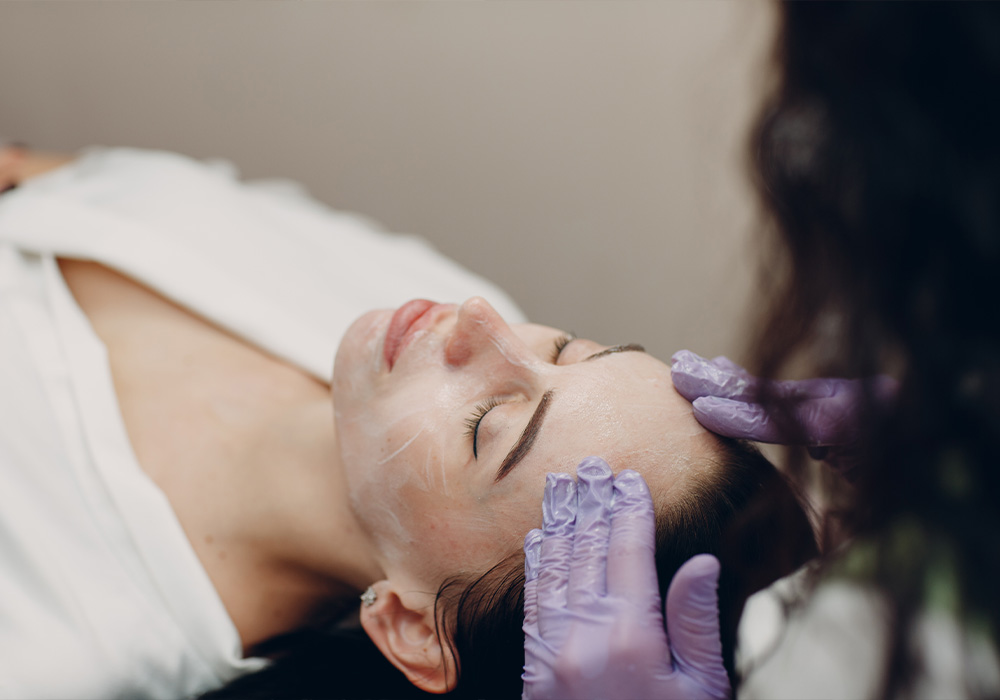While the facelift remains the gold standard of facial rejuvenation, an increasing number of patients are looking for an anti-aging solution that relies on a less-invasive approach to skin tightening with minimal downtime. For years, this seemingly simple request was hard-pressed to find, but recently a new crop of treatments relying on bipolar radio-frequency energy have emerged as a solution for skin laxity. New York plastic surgeon David Rapaport, MD, FACS has seamlessly integrated this novel technology into his practice, giving patients the results they want without the risks. Below, find Dr. Rapaport’s approach to tackling saggy skin on the lower face and neck, and why bipolar radio-frequency energy may be the solution you’ve been looking for.
NewBeauty: In the past, what have been some of the challenges you’ve faced when trying to rejuvenate the lower face and neck?
Dr. Rapaport: As a plastic surgeon who is extremely experienced with facelifts, facial injectables and other treatments, I’d say that the options for rejuvenating an aging lower face and neck are severely limited, so if you are dealing with skin laxity in the jowls and neck, your only real option is a facelift. A facelift, lower facelift and necklift remain the gold standard for facial rejuvenation, but unfortunately, the reality is that those procedures have a real downside to patients with numerous caveats: one being fear, two being scars, three being downtime, and four being risk of complications.
While I am a huge proponent of fillers and I think they are much more important than neurotoxins to the aging face—they make a more significant impact in the upper part of the face, including the lower eyelids, the mid face and cheekbones—their role in terms of rejuvenating the lower face and neck is very limited. This is because when patients are further advanced in age, they have all this loose skin, so properly tightening the skin effectively becomes a challenge.
NewBeauty: What treatments are you turning to now for successful facial rejuvenation of the face and neck?
Dr. Rapaport: There are two things, both of which deliver bipolar radio-frequency energy to tighten the tissue, that I’m very happy with and have been using with great success. The one method for tightening is FaceTite by InMode, a minimally invasive contouring procedure. The applicator device emits radio-frequency energy from the surface of the skin, right over the muscle, through all the fat. This creates linear energy that is perpendicular to the skin, which tightens those fibers of the fibroseptal network, leading to tightening. I’m using FaceTite when I’m doing submental liposuction on a patient where I think that the inherent laxity of the tissues is significant. It’s often somebody who is 30 or 40 years old, and I can tell by pinching the skin that there is laxity and a relative excess of submental fat.
The second is InMode’s Morpheus8, which offers bipolar radio-frequency needling. It’s not like microneedling because the needles go deeper than a quarter of a millimeter like microneedles do—anywhere from 0.5 to 4 millimeters. These needles are ideal for a patient who has mild laxity of the skin and neck, doesn’t have excess fat, or is reluctant to have any kind of incision— someone who doesn’t want liposuction, a noticeable incision or even a 1-millimeter scar that’s left behind from FaceTite. With the Morpheus8, I control the depth of the needles and how much energy they emit, which is what causes the tightening. While it doesn’t achieve a facelift result, it’s a noticeable difference without the risk.
NewBeauty: If a patient is interested in Morpheus, what should they expect the treatment to be like during and after the procedure?
Dr. Rapaport: We recommend doing a series of three treatments, four to six weeks apart. Each treatment stands alone, but the results are moderate from each, which is why we strongly recommend the trio of procedures. For approximately 90 percent of patients, it can be done under local topical anesthesia, so there’s no need for an anesthesiologist. Depending on the patient, the topical numbing may be supplemented with a little Pro-Nox gas (a 50/50 blend of nitrous and oxygen) and anti-anxiety or pain medication. The downtime is minimal. For most people, their face appears pink or red for 24 to 48 hours and it feels like they have a sunburn. Patients are given instructions for skin care, and the overwhelming majority of them are able to return to full function within three or four days of the treatment.
NewBeauty: Can this treatment be customized?
Dr. Rapaport: Absolutely. I customize it by setting the needles. While an aesthetician usually performs the treatment, I draw on the face precisely what depths I want the needles to go and where—it’s just like a prescription. For example, in fatty jowls, I direct the needle to go the full depth of 4 millimeters, which reduces fat, whereas in other, more superficial areas, I’ll use shorter ones for tightening purposes. If I’m treating someone with more fat, I may need more than just needles, so I’d recommend combining Morpheus8 with submental liposuction, and I occasionally even add in FaceTite as well. Any procedure that combines all three, I call the Trifecta. It’s important to note that the Trifecta, because it involves submental liposuction, requires a little more downtime. Usually there’s a little more bruising and three to four days of downtime.
Because there are so many variations, it’s crucial for the patient and I to have a good conversation, as expectations are very important. I know I’m giving them an improvement, but they need to know it won’t be the same result as a facelift. However, thanks to these treatments, for the first time in my career—and I’ve been a plastic surgeon since 1993—I’m able to offer a treatment that I know is going to give my patients real results, rather than just hope.

















